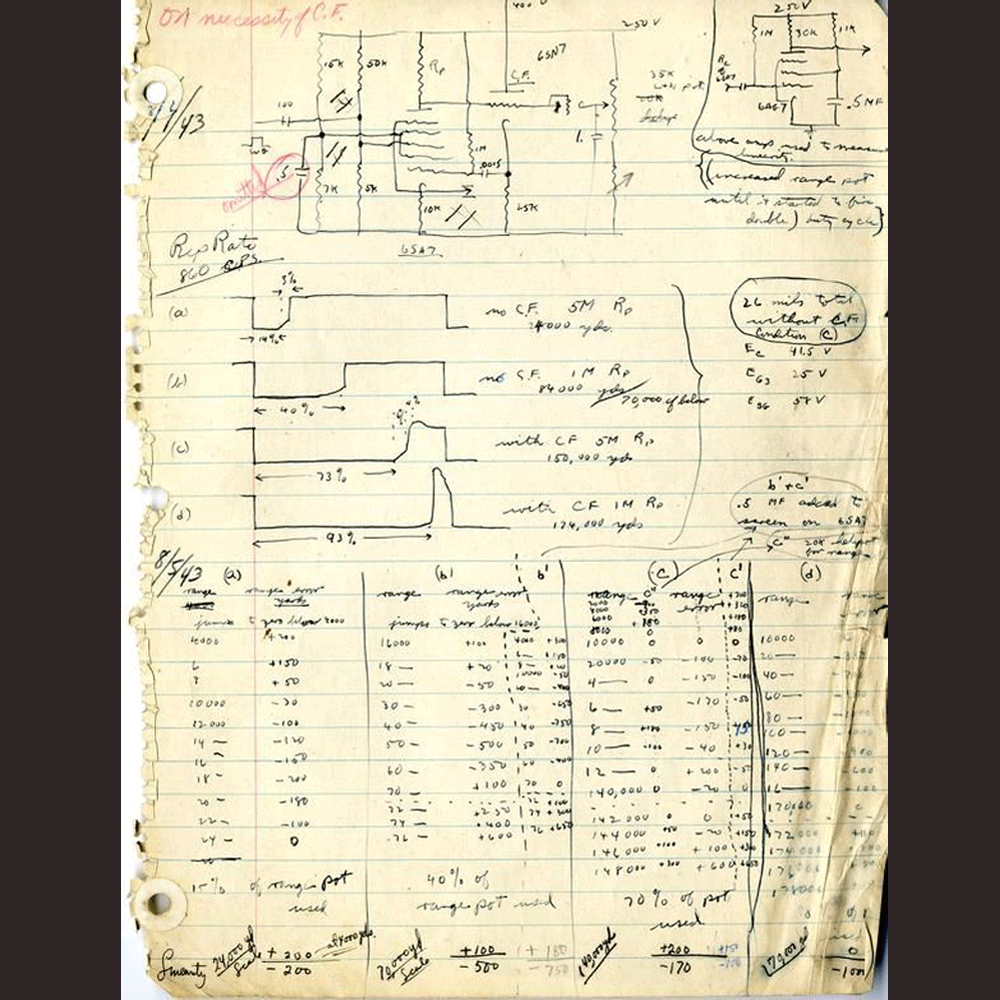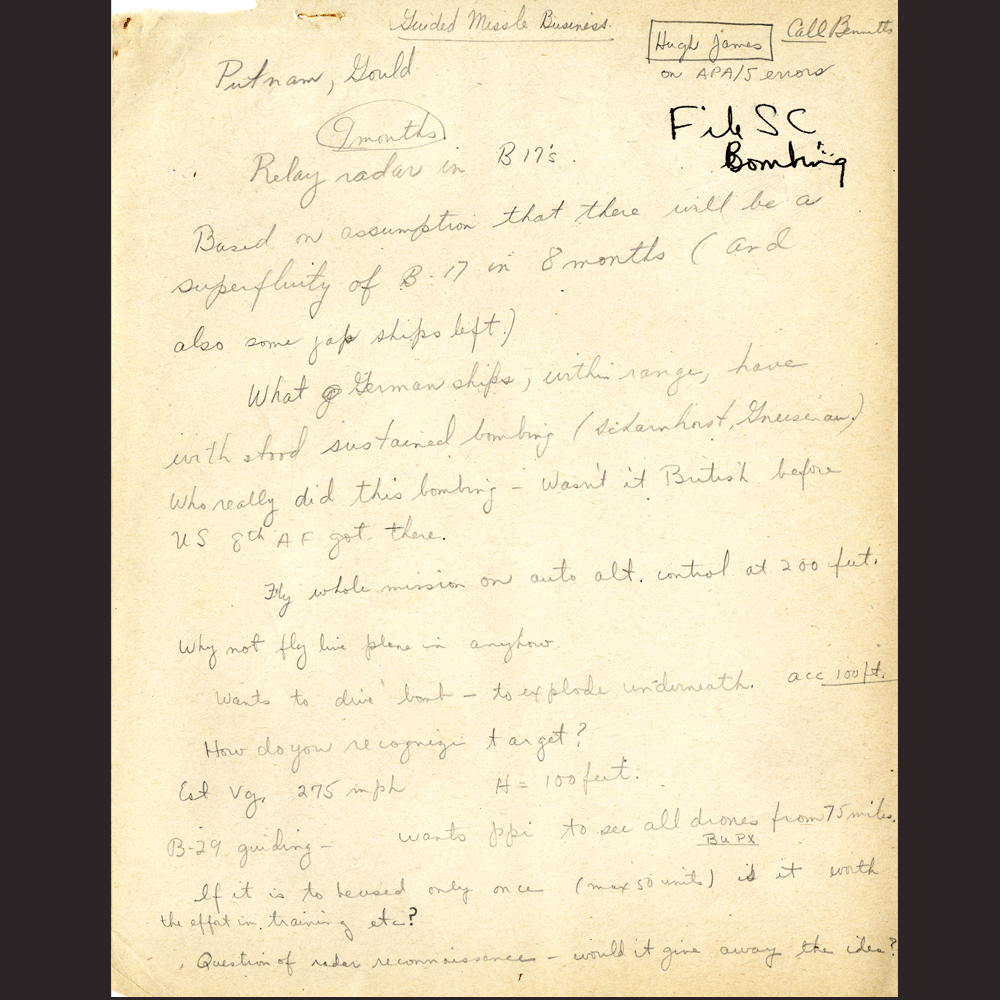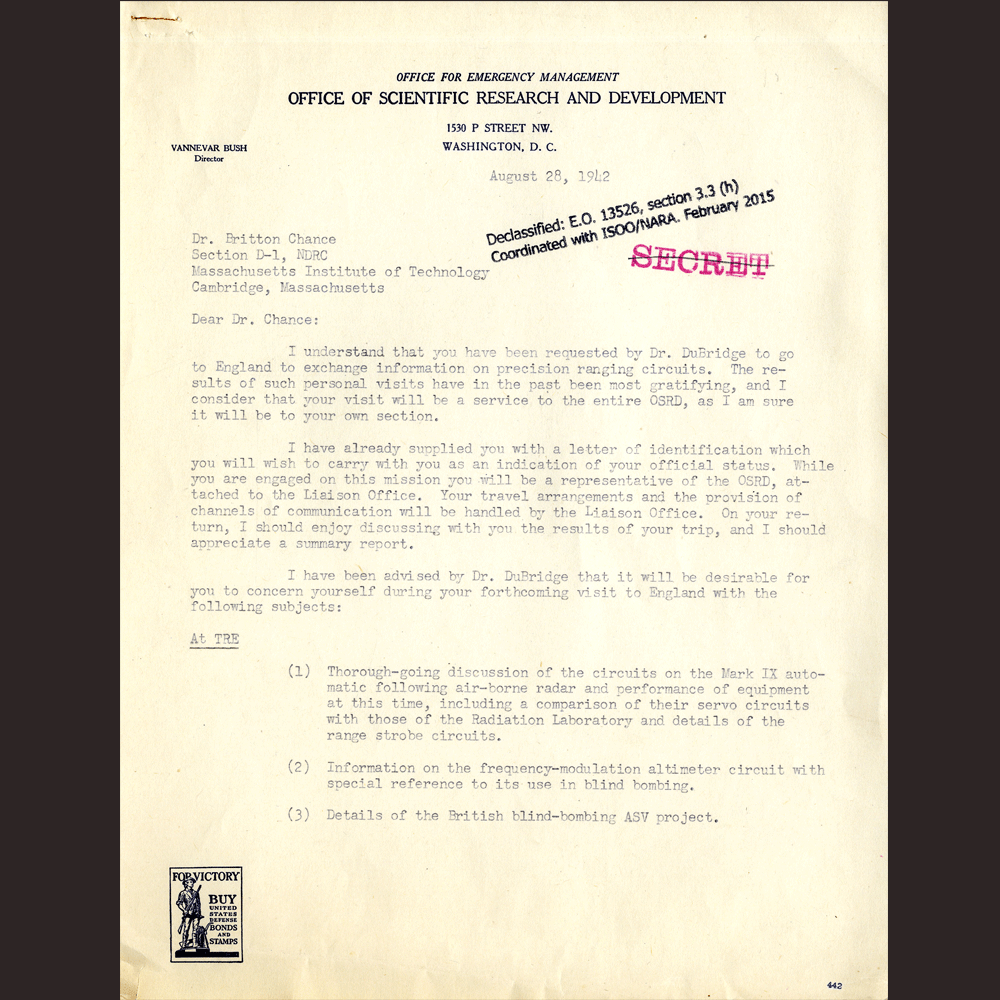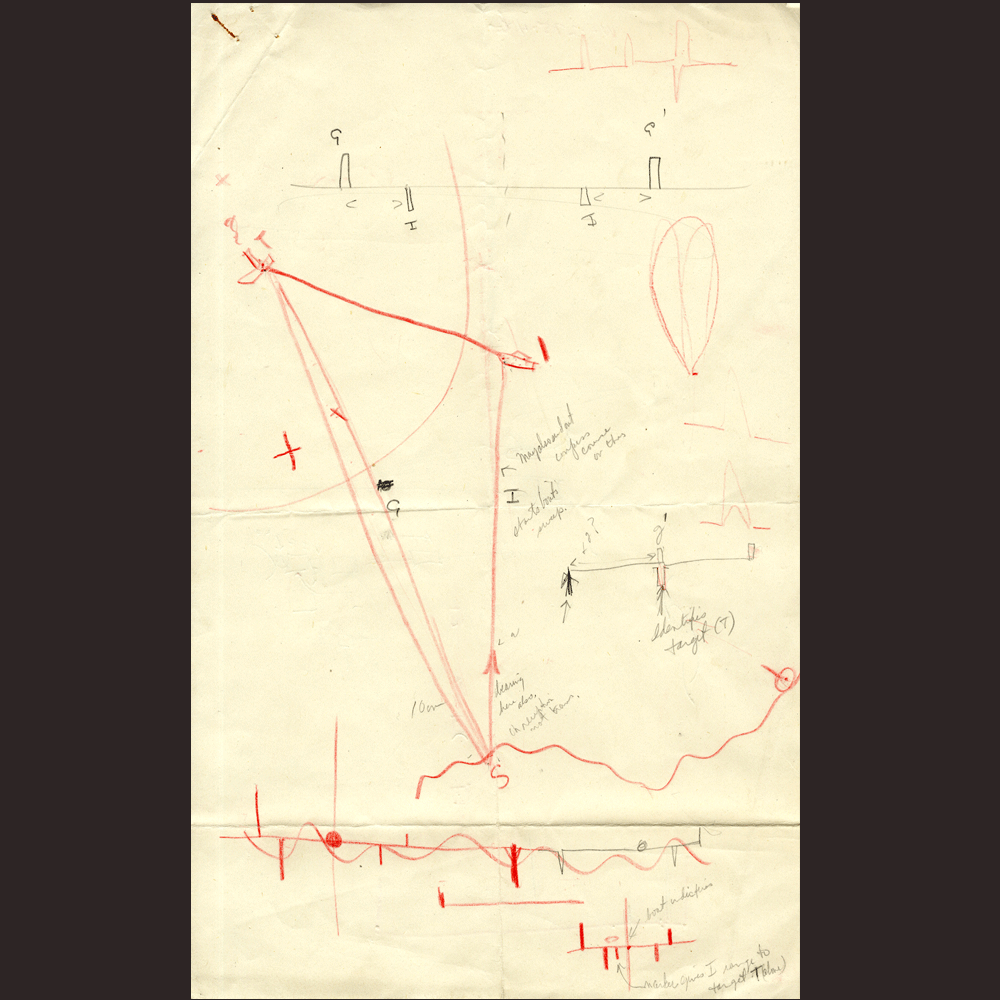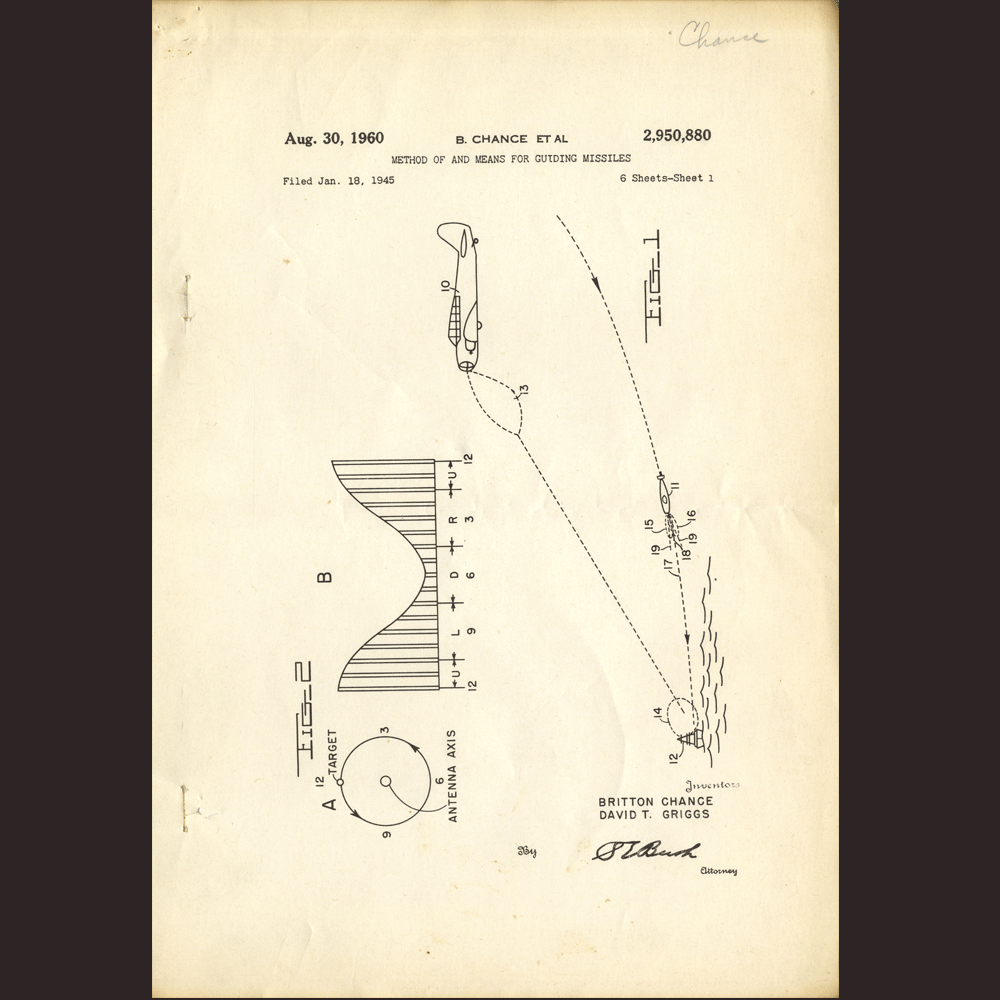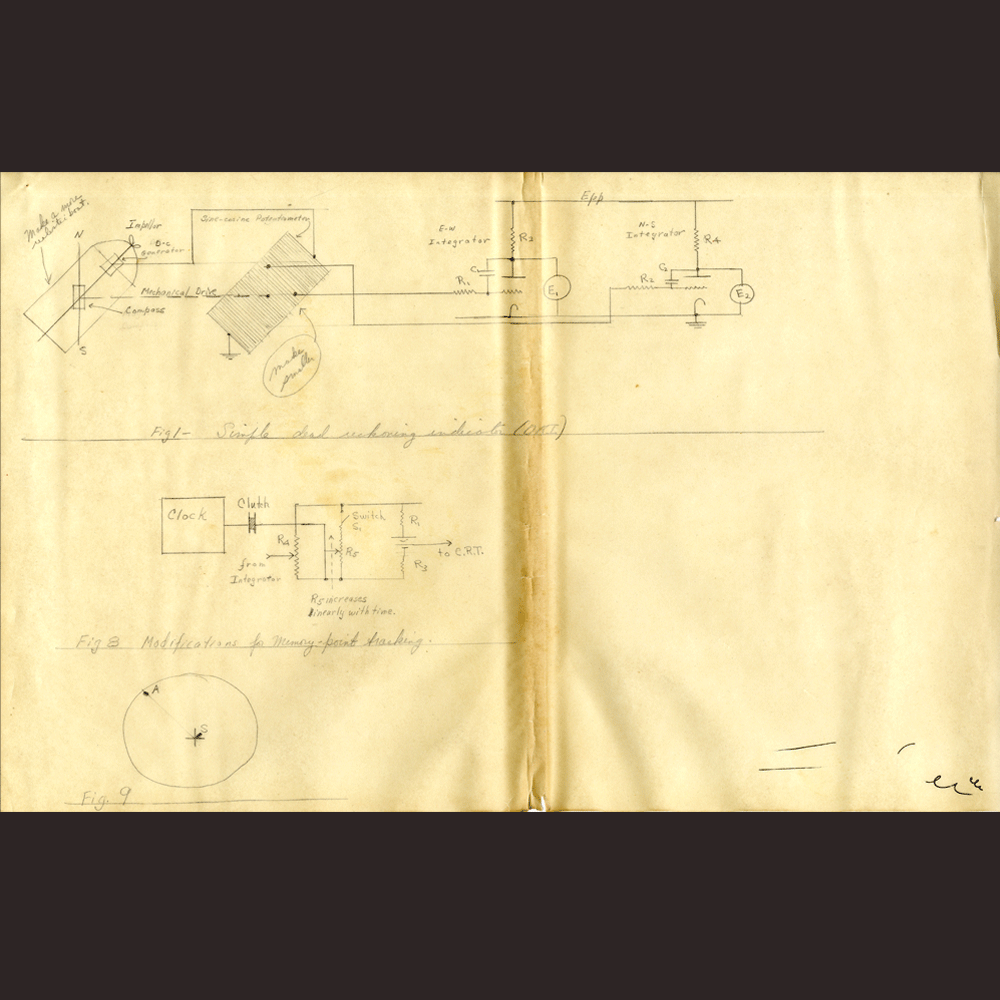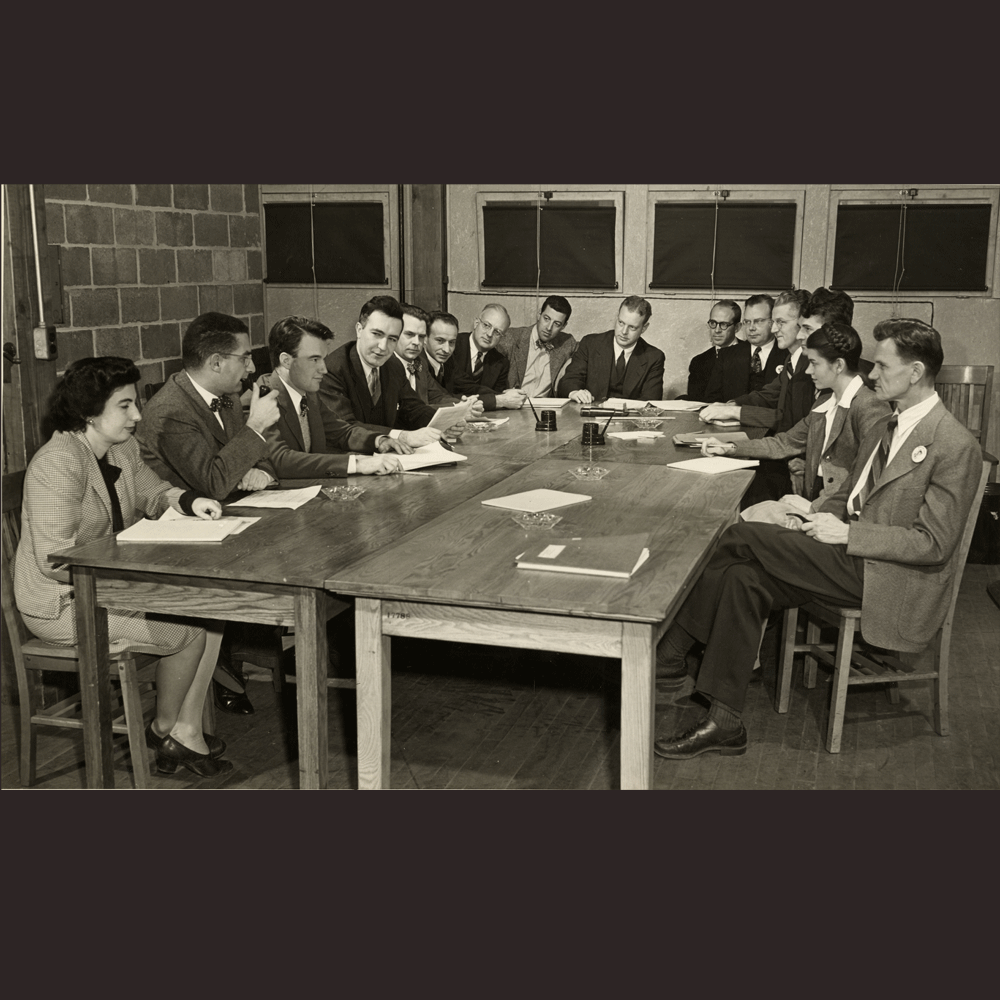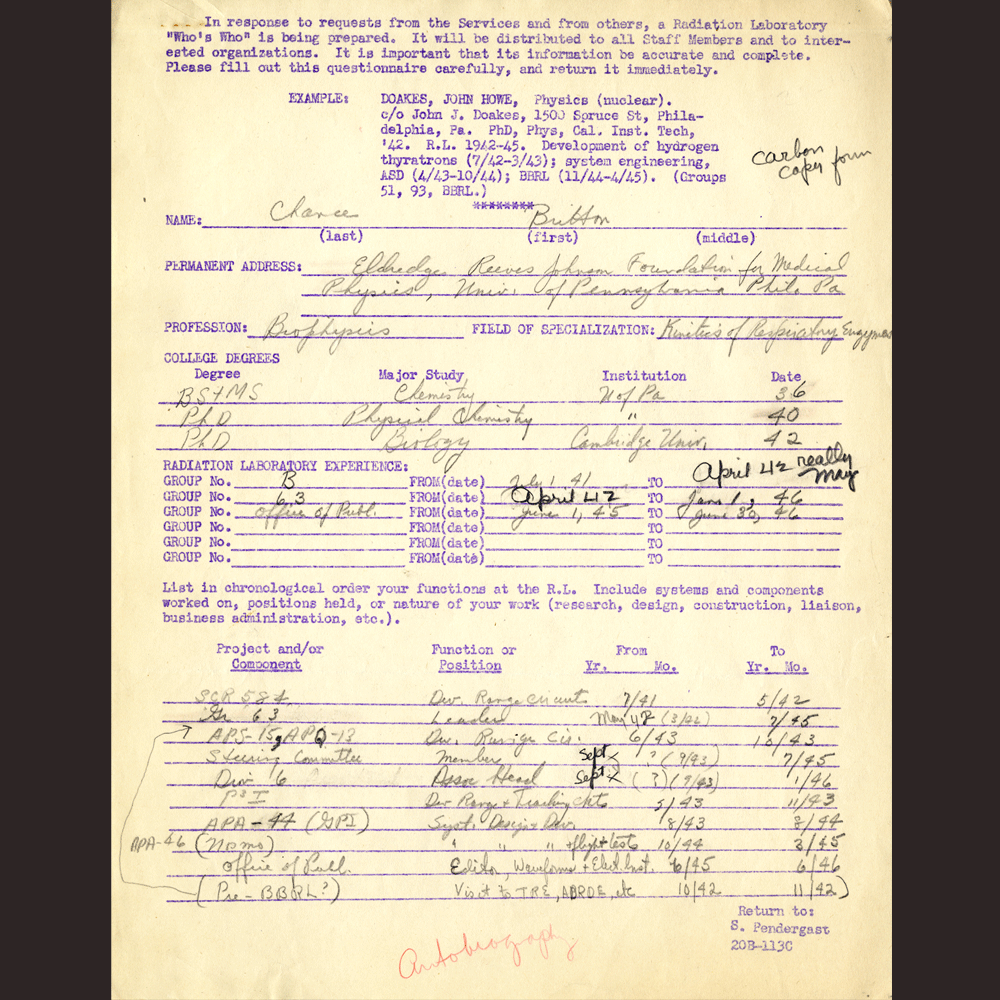
The Radar War
Britton Chance was invited by to become a member of the MIT Radiation Laboratory (Rad Lab) in the summer of 1941. For the next five years he worked on many cutting edge technologies that contributed to the Allied effort during the Second World War. With his strong engineering background he quickly rose to head the Precision Circuits Group 63 and worked primarily on precision timing and computer circuits for long-range bombing and fire control. He also played a major role in the design and development of the SCR-584 anti-aircraft gun laying radar system. Among other notable projects, Chance developed precision time-delay circuits for the Long Range Navigation (LORAN) system, as well as navigation and bombing computers. In addition, he wrote and edited three volumes of the MIT Radiation Laboratory Series, a compilation of research results from the Rad Lab. His volume on waveforms was greatly influential on post-war circuit designers.
Click on the images below to learn more about this formative period of Chance's life.

